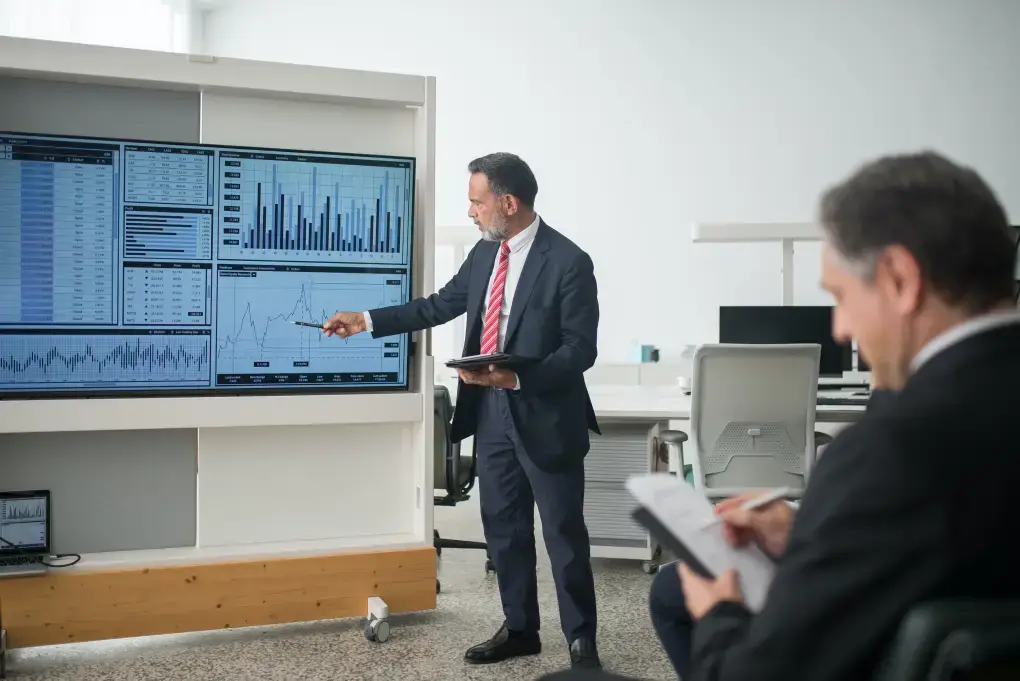Risk management solutions are a great way to protect an organization from disruptions. There is a variety of risk management solutions that can help an organization to accelerate enterprise risk management maturity in an organization. the most important thing is choosing the right risk management solutions for your business. A good risk management solution has a user-friendly interface, that can be used to analyze and assess the risks of an organization. With all of the benefits that risk management solutions have to offer, it can be tough to know which solution is right for your business
It’s important to choose a risk management solution that has an easily understood interface, so you can complete the analysis and assessments in your organization. This blog highlights the ways in which an organization can derive the most benefits from risk management solutions.
a) Use a Risk Management Solution that is tailored to your Specific Needs
The first step is analyzing your company’s needs and the risks involved in the industry. There are various types of risk management solutions available for almost every business vertical out there. Different businesses have different approaches to managing their enterprise risks. A risk management solution can be tailored to meet the unique needs of a particular company and industry. The process begins by identifying the scope of the business activities, analyzing them, and then selecting or customizing a solution that is suitable for the organization.
The first step is to identify the risks associated with your business. Get a custom-built risk management solution If you’re looking for a better understanding of the various startup costs and risks involved, then you can get a customized risk management solution that will address all aspects of your business. A customized solution will look at all of the costs and potential issues that could arise in your particular situation, and then provide advice on how to avoid or deal with those risks.
Risk management solutions need to be implemented as part of a company’s business strategy. The decision-making process can be greatly improved if risk management solutions are part of a company’s business strategy. This will help identify the risks as early as possible and develop mitigation plans before making important decisions. In addition, it is important to conduct impact analysis during the decision-making process to make sure that all costs and risks have been considered
b)Understand the Risk Management Challenges of your Company’s Operations.
The purpose of risk management is to effectively manage the risks you are exposed to, whether they are internal or external factors that pose a threat to your company. Having an effective risk management system in place ensures that all risks are identified and assessed, with the appropriate mitigating action being taken. It also allows for effective contingency planning. A company should have a risk management system that is compliant with the standards provided by ISO 31000. This standard provides guidelines for managing risks in a structured method.
There are a variety of risks and exposures involved in the operations of your company. A few examples would be natural disasters, supply outages, labor disputes, lawsuits, and so on. It is important to understand what kind of exposure faces the company’s capital base but also appreciates the likelihood that it will occur. The more likely an event occurring means that the more weight it should carry when determining how much to lower valuation or increase financial reserves for that event. To answer this question more fully would require a deep analysis into industry standards for estimating disaster recovery timescales and assessing individual risk mitigation plans used by companies while operating in different market sectors worldwide. Ideally, this exercise should encompass both going-concern considerations as well as termination scenarios.

c) Ensure that you have the Right Coverage for all Possible Events
To ensure you have coverage for all possible events, it’s important to review and understand the risks and exposures of your specific company. There are many risk management solutions to help protect you, ranging from policies to even analytics models that monitor events. Consulting with an expert at one of risk management firms is usually free in terms of services rendered because they want to be able to sell your business policies in the future – so when it comes time for renewal, or when another event occurs, they can package whatever needs you might have in this area.
Standards vary state by state but typically cover losses due to fire; theft; involuntary conversion (including destruction); reasonable wear and tear; repudiating creditors; labor problems; business interruption; freight or carrier problems; war insurance – including terrorism and sabotage, and government confiscation.
Also, you’ll want to make sure that any coverage your company has is sufficient given the growth of your business – a lot can happen in 5 years, so it’s important to maintain an eye on those changing metrics as well.
4. Seek out Advice from Experts in the Field who can help you make informed decisions about Risk Management Solutions
An organization can choose to purchase a ”risk management software” solution for around ”$50 per user, ”per annum, which helps detect and eliminate malware from entering your network.”The ”Internet security industry also provides ”consulting services for ”$300+ per hour.
Take the first step today by understanding your organization’s risk management obligations and creating a plan based upon your organization’s particular needs of the business.
Examples of Risk Management Solutions
i) Optional components(financial markets)
FraudPoint is an intelligent easy-to-use tool that allows you to detect which credit applications and businesses are providing you with a higher risk of fraud. InstantID International provides a comprehensive identity verification business continuity monitoring and threat management platform against terrorism.
Enhanced due diligence for lxisNexis® International offers exceptional benefits to the organization’s financial markets. Manages risk to your business, safeguard against identity theft and improve compliance with business standards. Gain insight into the risk associated with personnel-identifiable information (PII) Gain access. Gain deep knowledge of PII intelligence for managing risk. Reduce losses at customer engagement.
Financial services organizations and the insurance industry critical business solutions like offering excellent portfolio management avenues for the customers. sustainable global society initiatives are accelerated for the benefit of the greater society.
ii) RMS Solutions(Catastrophe risk modeling)
Established by Stanford researchers in 1989 the RMS created the world’s first earthquakes model. Today RMS(risk management solutions inc) has 1350 employees at 16 locations in the U.S., in Bermuda, Zurich, India China, Japan, Singapore, and Australia. Insurer’s investors, financial institutions, governments, and NGOs trust RMS (Catastrophe risk modeling)solutions to understand and mitigate catastrophic risk. In May 2019 we published the open-standard software RMS Risk IntelligenceTM which provides an integrated risk intelligence and analysis solution. Through this purpose-built platform, a customer can tap into RMS HD models, rich data layers intuitive applications as well as APIs that easily integrate into existing enterprise systems RMS Risk Intelligence™. It captures risk data in the solution and analyzes the risk data to offer critical business decisions of the firm.
RMS Risk Intelligence is the first open, standard software platform for risk intelligence. By partnering with RMS, our customers gain access to the most accurate and up-to-date data, models, and insights they need to understand complex risks. Catastrophic events will be analyzed and mitigation to manage risk addressed. Public agencies evaluate the occurrence of catastrophic events in line with public agencies using predictive risk models and analytics solutions in the public sector. A better understanding of a resilient world is crucial in rms models but the leadership team of financial institutions needs to use risk analytics applications for a resilient world and industry.
iii) LexiD
Identity theft cost United States businesses $55.7 billion in 2006. 37% of identity theft victims are financial agencies. LexID® analyses billions of partial and complete records and filters and links that information according to relevance to form a complete picture of an individual. Email users may also integrate their web application with their RMS/AML portals for smoother operation. Web accessibility provides users a cost-effective option for businesses seeking to reduce IT overhead and software maintenance. Email provides enhanced capabilities for email clients.
All company sizes risk increasing risks of fraudulent activities and identity theft. Detection of these forms of crime is not only a financial necessity — it’s legal. LexisNexis Risk Management Solutions provides one of the leading and popular tools to risk management and fraud prevention professionals. Each brings a better user experience which makes your job easier and safer. You have to make informed decisions every day if you’re looking to protect company assets or provide information to improve the service.

What is RMS Tool?
The RMS tool is a risk management solution that can help you to better understand and reduce the risks within your organization.
The system is scalable and flexible, able to handle all types of commercial enterprises – from small businesses to mid-size companies by using an effective analytics process known as enterprise risk management (ERM).
Who is RMS Owned by?
RMS is owned by Marsh & McLennan Companies.Marsh and McLennan Companies (MMC) has agreed to acquire Rapid Risk Management Solutions Inc. (Bermuda: MARC, “RMS”), a Bermuda-based provider of software and advisory services for risk modeling and management, in an all-cash transaction valued at $1.7 billion or €1.5 billion on a debt-free basis, including the assumption of the company’s existing debt of approximately €380 million.

